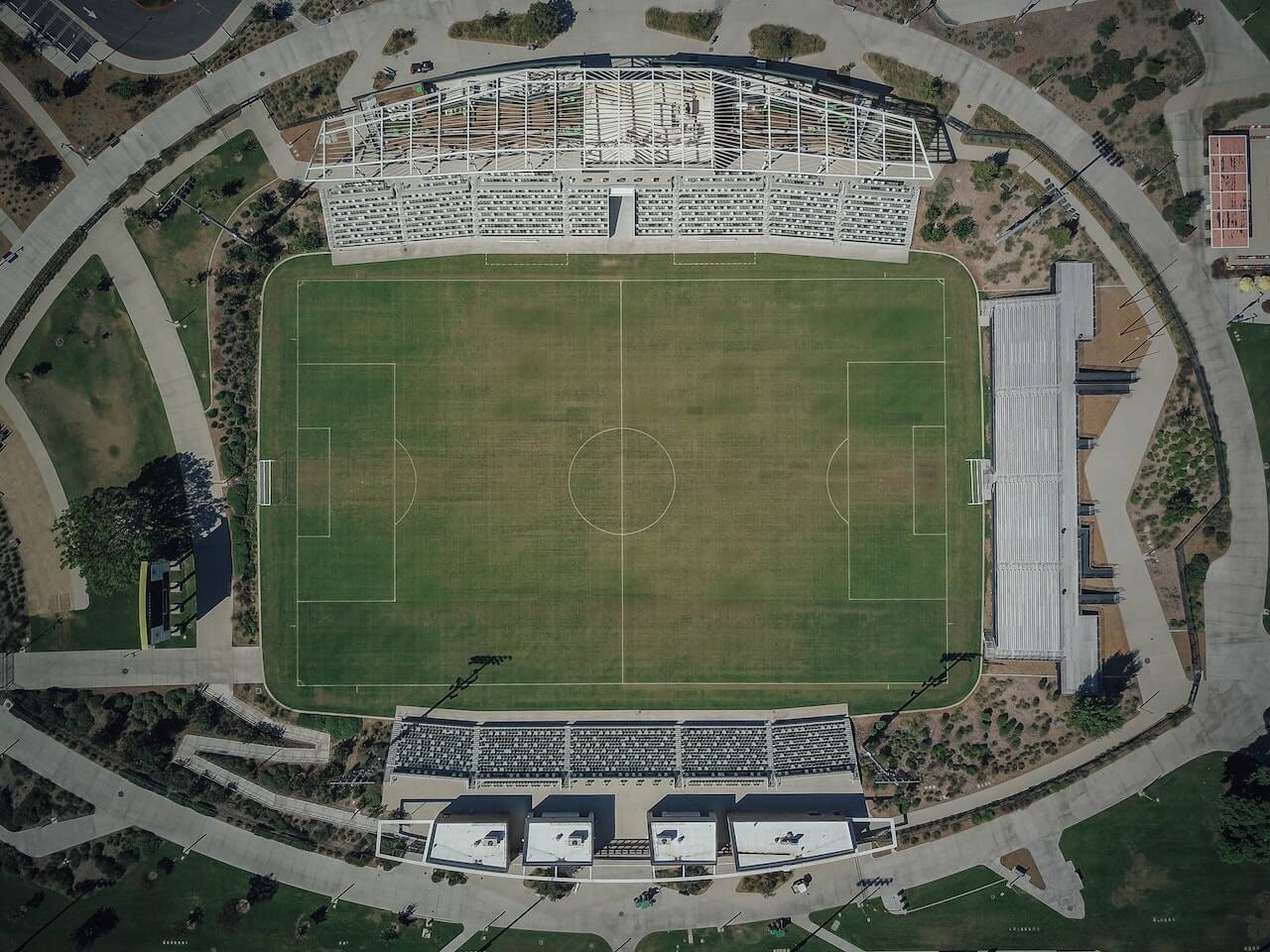Soccer is one of the most popular sports in the world, with millions of people playing it at all levels. One of the most important aspects of the game is the soccer field dimensions that must be adhered to in order to ensure fair play.
According to the official rules of soccer, the field must be rectangular and measure between 100-130 yards in length and 50-100 yards in width. The field is divided into two halves, with a center circle and a center line that runs the length of the field. The goal area is marked by two goal posts and a crossbar, and the penalty area is marked by a rectangle that extends 18 yards from the goal line.
Understanding the dimensions of a soccer field is essential for players, coaches, and referees alike. By following the official rules, players can ensure that they are playing on a fair and level playing field, while coaches can use the dimensions to develop effective strategies for their teams. Referees must also be familiar with the dimensions in order to make accurate calls during the game.
Field Size Regulations
Soccer is a sport that is played all around the world, and the dimensions of the field can vary depending on the level of play. However, there are some regulations set by FIFA that must be followed for official matches.
The length of the field must be between 100-130 yards (90-120 meters), and the width must be between 50-100 yards (45-90 meters). The field must be rectangular in shape and marked with lines that are no more than 12 cm wide.
In addition to the length and width, there are other regulations that must be followed. The center circle must have a radius of 10 yards (9.15 meters), and there must be a penalty area and goal area at each end of the field. The penalty area is 44 yards (40 meters) wide and extends 18 yards (16.5 meters) from the goal line, while the goal area is 20 yards (18.3 meters) wide and extends 6 yards (5.5 meters) from the goal line.
It’s important to note that these regulations only apply to official matches. For recreational or non-professional matches, the dimensions of the field can vary. However, it’s still important to ensure that the field is a safe and suitable size for the players.
Section 3: Field Markings
Soccer fields are marked with a variety of lines and markings that help players, referees, and spectators understand the layout of the field and the rules of the game. Here are some of the most common markings found on a soccer field:
- The center circle: This is a circle with a radius of 10 yards located at the center of the field. The kickoff takes place from the center of this circle at the beginning of each half and after each goal.
- The penalty area: This is a rectangle with a width of 44 yards and a length of 18 yards located at each end of the field. It is also known as the “18-yard box” and is where fouls committed by the defending team can result in a penalty kick for the attacking team.
- The goal area: This is a smaller rectangle with a width of 20 yards and a length of 6 yards located within the penalty area. It is where the goalkeeper can pick up the ball with their hands and where goal kicks are taken.
- The penalty spot: This is a small circle with a diameter of 12 yards located in the center of each goal area. Penalty kicks are taken from this spot.
- The corner arc: This is a quarter circle with a radius of 1 yard located at each corner of the field. It is where corner kicks are taken.
These markings are standardized by FIFA, the international governing body for soccer, and must be followed by all professional and international soccer leagues. However, some amateur leagues may have slightly different field dimensions or markings, so it is important to check the rules of your specific league before playing or officiating a game.
Goal Dimensions
One of the most critical aspects of a soccer field is the goal. The goal is the ultimate destination for the ball, and it’s what the players aim for during the game. The dimensions of the goal are an essential factor in determining the outcome of the game. A goal that is too small may result in fewer goals being scored, while a goal that is too big may result in too many goals being scored.
The official dimensions of a soccer goal are 8 feet tall and 24 feet wide. The goalposts are placed 8 yards apart, and the crossbar is 8 feet above the ground. The goal area is marked by two lines that extend 6 yards from each goalpost and meet at the penalty area line. The penalty area is marked by two lines that extend 18 yards from each goalpost and meet at the penalty area line.
It’s essential to note that the goal dimensions may vary for different levels of play. For example, youth soccer may have smaller goals to accommodate the smaller players, while professional soccer may have larger goals to challenge the skilled players. However, the official dimensions of the goal remain the same for all levels of play.
Finally, the goal net is an essential component of the goal. The net is usually made of nylon or polypropylene and is attached to the back of the goal frame. The netting should be securely fastened to the goal frame to prevent it from falling off during the game.
Section 5: Penalty Area and Arc
The penalty area, also known as the 18-yard box, is a rectangular area located at each end of the soccer field. It measures 44 yards wide and 18 yards long. The penalty area is marked with a solid white line, which is 12cm (5 inches) wide. The purpose of the penalty area is to provide a designated area where fouls committed by the defending team result in a penalty kick for the attacking team.
Within the penalty area, there is a smaller rectangular area called the goal area, which measures 20 yards wide and 6 yards long. The goal area is marked by a solid white line that is 12cm (5 inches) wide. The purpose of the goal area is to provide a designated area where goal kicks can be taken by the defending team.
Outside of the penalty area, but still within the 18-yard box, there is a semi-circular arc called the penalty arc. The penalty arc has a radius of 10 yards and is centered on the penalty spot, which is located 12 yards from the goal line. The penalty arc is marked by a dotted white line, which is 12cm (5 inches) wide. The purpose of the penalty arc is to provide a designated area where the defending team must stay outside of during a penalty kick.
In summary, the penalty area and arc are important components of the soccer field that help regulate fouls and kicks. The penalty area is a rectangular area at each end of the field, while the penalty arc is a semi-circular arc located just outside of the penalty area. Both areas are marked with white lines and serve specific purposes during gameplay.
Section 6: Corner Arc and Flagposts
Corner arcs and flagposts are important components of any soccer field. They help to define the boundaries of the field and provide important reference points for players and officials. In this section, we will take a closer look at these elements and explore their dimensions and placement on the field.
The corner arc is a curved line that is drawn at each corner of the field. It is used to mark the area from which a corner kick is taken. According to FIFA regulations, the corner arc should have a radius of 1 meter (1.1 yards) and should be marked with a non-permanent material that is distinguishable from the field.
The flagposts are tall poles that are placed at each corner of the field. They are used to help referees and players identify the boundaries of the field. According to FIFA regulations, the flagposts should be at least 1.5 meters (5 feet) tall and should be made of a flexible material that will not cause injury to players who come into contact with them. The flagposts should be placed at the outer edge of the corner arc and should be positioned so that they do not obstruct the view of the players or officials.
It is important to note that the dimensions and placement of corner arcs and flagposts may vary depending on the level of competition or the specific rules of the league or tournament. However, the FIFA regulations provide a standard that is widely recognized and followed around the world.
Overall, the corner arc and flagposts are important components of any soccer field. They help to define the boundaries of the field and provide important reference points for players and officials. By following the FIFA regulations for their dimensions and placement, we can ensure that the game is played safely and fairly.







